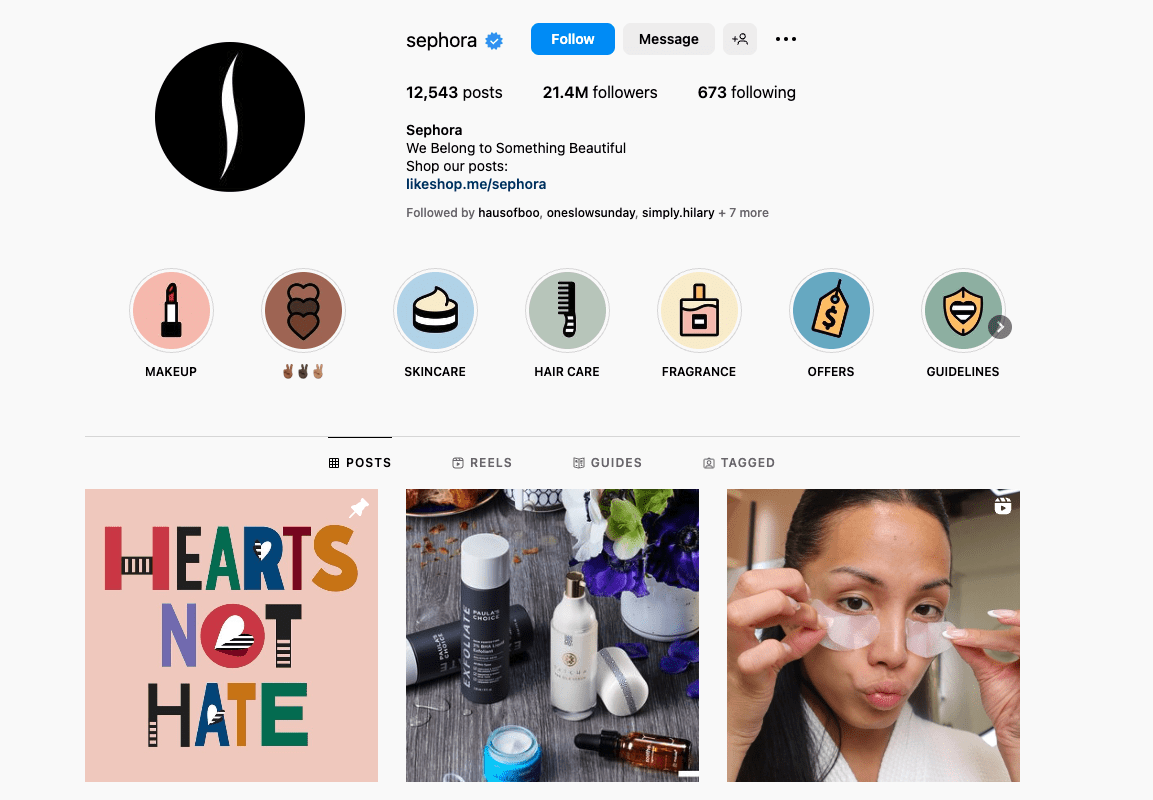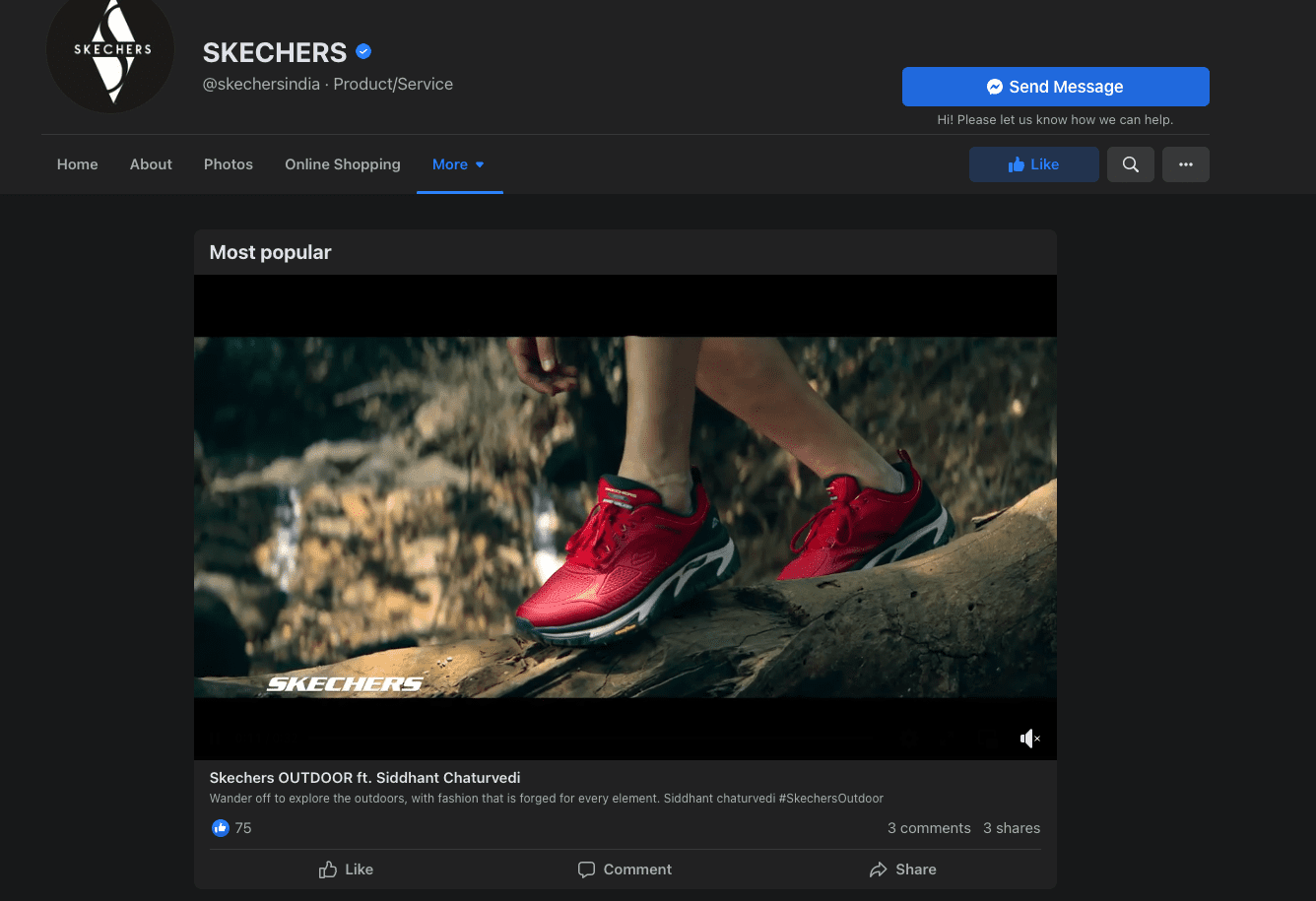You want to establish a social media presence for yourself or your company, but how do you get started?
A social media presence is essential for any company to have to function, yet before one can function effectively on social media, it must be carefully designed and implemented.
If you’re courageous enough to handle it yourself, we’ve compiled a useful list of guidelines and best practices to help you build your social media presence.
In fact, social media growth needs time and work, in addition to continual implementation, monitoring, and strategic adjustment.
- Why Is A Brand’s Social Media Presence Important?
- How To Establish Your Social Media Presence: 30 Effective Tips
- 1. Captivate Your Audience
- 2. Watch For Upgrades And Algorithms
- 3. Be Consistent And Active
- 4. Add Social Buttons To Your Emails
- 5. Create A Social Media Calendar
- 6. Understand That It’s A Waiting Game
- 7. Maintain Your Brand’s Aesthetics and Voice
- 8. Monitor Your Competitors
- 9. Use Trends
- 10. Invest In Top-Notch Creative Resources
- 11. Listen To Your Audience And Adjust
- 12. Make SEO-Friendly Profiles
- 13. Striking A Balance Between Promotion And Value
- 14. Employ Tools To Post, Evaluate And Track Content
- 15. Be Authentic
- 16. Invest In The Right Platforms
- 17. Utilise User-Generated Content
- 18. Advertise Your Social Accounts
- 19. Use Appropriate Hashtags
- 20. Post Video Content
- 21. Test New Features
- 22. Test Out Various Formats
- 23. Monitor Important Social Media Metrics
- 24. Evaluate Social Media Analytics
- 25. Work With Influencers And Brands
- 26. Generate Educational Content
- 27. Employ Content Creation Tools
- 28. Share Your Brand’s History
- 29. Share Social Proof
- 30. Create A Crisis Management Plan
- Frequently Asked Questions
- Wrapping Up
Why Is A Brand’s Social Media Presence Important?
The term “social media presence” describes a brand’s online visibility and the relationships it creates with its target audience.
Before establishing a direct interaction outside of this marketing channel, you can gain the audience’s trust more quickly the more powerful your presence is.
The number of social media users globally in 2023 is projected to be 4.89 billion. This is a fantastic chance to draw attention to your company.
Having a social media presence takes more than an account with content. It entails producing content customized to your intended audience’s preferences and requirements.
Doing this will gain your audience’s trust and be one step closer to gaining their business.
Before you develop a direct relationship, you can communicate, meet customer needs, and establish a social media presence. In an environment where people have similar interests, you can also establish personal connections with your clients.
How To Establish Your Social Media Presence: 30 Effective Tips
Your company can blossom like wildflowers if you have a strong social media presence.
However, you won’t achieve this until you have a sizable fan base and understand how to satisfy their needs.
Here are some fantastic tips to help any marketer or business owner can boost their social media presence and support the expansion of their company:
1. Captivate Your Audience
The closest touch you have with customers regularly is often through social media. You may evaluate your audience’s reaction a few hours after publishing, and you gain knowledge with each piece.
Create ways to allow your followers to develop a stronger relationship with your brand to go one step further.
This can be done by asking them to take part in conversations in the comment section, participating in entertaining quizzes, making polls, responding to Q&As, and performing live videos.
Through these activities, you can learn a great deal about your audience’s preferences, dislikes, difficulties, and concerns.
As a result, you will be more equipped to develop conversion-focused campaigns.
2. Watch For Upgrades And Algorithms
Facebook was the first to employ an algorithm that seemed to understand your thoughts and predetermined what content to present.
Since most platforms currently employ algorithms in some way, using their influence can greatly increase your presence.

Facebook, for instance, prioritizes visually appealing information above less appealing materials like plain text. Simply including a photo in your status update can significantly impact how many people see your post.
This explains why videos predominate over odd status posts on your Facebook page.
3. Be Consistent And Active
The inconsistency of your posting schedule is one of the most frequent errors you’ll encounter with social media for small businesses. This can make it difficult to get momentum with search engines and negatively impact article visibility.
The window of time you have to establish a relationship is little since content moves quickly, and it gets even worse if you don’t publish frequently. This is true, particularly on Facebook, where user participation influences what material shows up in their news feed.
4. Add Social Buttons To Your Emails
Just consider how frequently you send emails. People will probably start checking out your profiles and, eventually, your website if you include social media icons in your emails because they will be inquisitive. Your social media presence will develop if you do this.
5. Create A Social Media Calendar
Consistency is crucial, and a content calendar may help you organize and schedule your social media posts. It can improve engagement and help you stay at the forefront of your audience’s eyes.
You can schedule your content according to significant occasions, cases, and brand-related promotions using a content calendar. You may improve your process and utilize your time more effectively by planning your content.
6. Understand That It’s A Waiting Game
In an effort to expand swiftly, brands frequently make blunders on social media. You become irritable and desire quick results. You may therefore try the social spin on get-rich-quick schemes to increase your following.
Nevertheless, the value of those tactics is merely surface-level. But you soon realize that they don’t help you get any closer to your objectives and audience connection.
Building a sustainable presence through organic expansion is the most sincere and efficient strategy.
Why? Since you’ll be receiving accurate feedback from your intended audience, you can tailor your strategy to offer better stuff.
7. Maintain Your Brand’s Aesthetics and Voice
Consistency includes not only your publishing schedule but also your entire brand.
In all of your marketing channels, the tone of your brand should be consistent.
If your brand’s messaging and identity appear to change daily, consumers may need to help understand it.
How can something that people can’t understand make them relate to you?

Make sure your brand strategy and your social media plan are compatible once you have designed it.
8. Monitor Your Competitors
It’s acceptable to pry into your competitors’ business occasionally.
The most important element to consider when assessing a competitor’s social media presence is how they place themselves in the market and how similar or related audiences react to their efforts.
Understanding your competitors’ strategies is beneficial, but it shouldn’t affect your overall social media strategy. Be picky about the ideas you’re adapting because what works for one brand might not be appropriate for yours.
9. Use Trends
There is a new trend spreading through websites like Twitter and TikTok every few weeks, sometimes even every day.
Trends can help you increase traffic spikes and brand exposure. It’s a chance to think creatively and participate in something you know your audience will like.
Always go back to your brand strategy if you’re unsure of something. Is this consistent with your brand’s ultimate identity and messaging? If not, skip it.
10. Invest In Top-Notch Creative Resources
One of the primary channels for brand discovery is social media.

When your post appears as your target audience is looking through Instagram, it captures their attention.
What will be among their initial actions? Browsing your profile.
A potential consumer may only give you a few seconds to make a good first impression, so you don’t want to have poor content send them away. This may involve the use of subpar photos, grammatically incorrect language, and non-branded content.
Make sure that the narrative your social media profile is telling is the one you want to be told.
11. Listen To Your Audience And Adjust
The key to success on social media is social listening and monitoring.

In addition to providing you with information about your market and rivals, they also help you understand how your target audience views your brand.
You may distinguish yourself from the competition by using that information as leverage to guide your brand strategy. Find out how consumers react to your brand by starting a search on relevant topics.
Afterward, perform a search for your company name to see what the general opinion is about it.
12. Make SEO-Friendly Profiles
A potential customer’s first encounter with your brand will frequently be on one of your social media profiles. Utilizing hashtags is among the simplest ways to optimize your posts.
A strong bio, eye-catching photos, and calls to action should all be included in your profiles to ensure they are thoroughly optimized. This can assist you in gaining new followers and creating a strong first impression.
Additionally, you should optimize your bio page by adding a few keywords to your company description, having active links that take your followers to other channels like your website or your YouTube account, and using the same profile picture and handle across all social media sites.
13. Striking A Balance Between Promotion And Value
You need to strike the correct balance between promoting your goods or services and adding value in order to succeed.
The majority of users don’t use social media to view advertisements, and they typically utilize it to find amusement, whether that be through humorous videos or educational threads.
While some promotion is expected, if all you promote is your product, you’ll quickly lose your audience.
This must be balanced with information that people can relate to. They’ll be more willing to try your goods or service once you’ve established their reputation and trust.
14. Employ Tools To Post, Evaluate And Track Content
Social media management takes continual attention; it is not a marketing strategy that can be put up once and left alone. Social media technologies can be useful in this situation.
You can schedule your posts across various platforms using software like Tailwind, Content Studio, and Later.
You can also follow your analytics and rivals, perform audits, and receive data-driven post recommendations.

As you grow your business, social media tools become increasingly important for maintaining a consistent presence.
15. Be Authentic
Authenticity is essential on social media because consumers are becoming warier of influencers and brands that appear fake or act dishonestly. Show your consumers the true face of your brand by being authentic and true to who you are.
16. Invest In The Right Platforms
It’s easy to think that to boost your social media presence, you need to be everywhere. It’s a waste of effort and money if your target demographic utilizes different channels.
You should thus conduct some study to pinpoint your audience’s geographical location so that you may reach them there. You can discover this data through surveys, interviews, competition, and platform exploration.
17. Utilise User-Generated Content
The beautiful thing about social media is that you can reach audiences outside of your target demographic through influencers, partners, and your own followers. Your own content can only go so far on these platforms.
One of the most effective methods for reaching an audience that is part of your target market but may be out of your present reach is influencer marketing.

Additionally, influencers and user-generated content (UGC) have social proof, which provides a strong base upon which to develop relationships with newcomers.
It’s similar to when your friend introduces you to a friend. Since you already have a level of trust in them, the person they are introducing you to also benefits from that trust.
18. Advertise Your Social Accounts
Your audience should be able to find your excellent social media profiles, so make sure they can.
Consider the possibility that you have a loyal list of subscribers who do not now follow you on social media. As a result, make sure to integrate links to your social media sites into your offline and online marketing efforts.
Using hashtags increases the number of people who can find your material. You can improve brand recognition and get your fans to share your content with their networks by developing your own custom hashtag.
By doing this, you can broaden your audience and establish a powerful social media presence.
20. Post Video Content
The engagement rates of video material are typically higher than those of text or image-based content.
The importance of video content in social media networks’ algorithms is rising.

Investing in video can make your content mix more diverse and more appealing to a wider range of audience groups. You can make various movies, including how-to tutorials, brand stories, and product demonstrations.
21. Test New Features
Social media sites regularly roll out new tools and features, so you ought to test with them to find which ones are most effective for your company and target demographic.
While some features might be a dud, others might completely change how you interact with people on social media. The way people absorb the material on Instagram, for instance, has radically transformed as a result of Reels.
22. Test Out Various Formats
You may determine what kinds of posts your audience prefers by experimenting with various post formats, such as photographs, videos, carousels, or content that is interactive.

Despite the continued popularity of photographs and text-based posts on social media, alternative forms, such as live videos, Stories, Reels, and videos akin to those found on TikTok, are gaining traction.
23. Monitor Important Social Media Metrics
Understanding how well your social media plan works requires tracking important indicators. You can use it to make informed choices that will maximize your social media presence.
Monitoring important metrics like popularity, participation, subscriber growth, click-through rate, conversion percentage, sentiment analysis, and presence score can provide you with a wealth of insightful information.
24. Evaluate Social Media Analytics
There are analytics dashboards for each social media network, which can provide a wealth of insightful data. It will display how well your social media profiles are doing.
You can further tailor your social media strategy to match the requirements and interests of your audience by looking at statistics on who interacts with your content and the most popular forms of material.
25. Work With Influencers And Brands
Influencer marketing is one of the most effective marketing strategies for creating a dominating social media presence.
Influencers can assist you in reaching audiences that might not otherwise be exposed to your business. But it’s crucial to pick influencers who share your brand’s values and appeal to the right audience.
You may reach a wider audience and better connect with your target market by collaborating with other brands on social media. It will assist you in developing credibility and positioning your brand as a respected authority in your field.
Brand alliances will assist you in acquiring new clients and keeping hold of current ones. Find companies that align with your values and objectives and develop inventive methods to work together on social media marketing.
26. Generate Educational Content
Providing value to your audience with educational content can position your business as a thought leader in your field, and social media algorithms reward quality content.
Think about producing instructional material, such as how-to manuals, tutorials, webinars, or enlightening articles, that offers perspectives on your sector or solutions to frequent issues.
27. Employ Content Creation Tools
Although it makes sense that you would want to position yourself as an authority in your field, not all of the content you produce, curate, and share can be directly related to your company.
These programs enable you to produce engaging social media material, such as images, videos, and animations. A few of the most well-liked content production tools are Adobe Creative Cloud and Canva.
Your brand story is a means to share your beliefs, vision, and mission with your audience and goes beyond simply listing your goods or services.
You can use it to develop your brand identity. Share your brand’s principles and stories on social media to show how your goods and services have a real-world impact.
Send viewers exclusive content that reveals how your company operates.
To establish credibility and trust on social media, use social proof, such as client evaluations and testimonials. By publishing client testimonials and presenting user-generated material, you may include social proof in your social media strategy.
30. Create A Crisis Management Plan
A crisis on social media can happen quickly and spread widely. Create a social media crisis management strategy that details your approach to handling consumer complaints, responding to critical comments, and resolving any potential problems before they become serious.
You can try consulting a social media expert if you need more help preparing a doomsday plan.
Frequently Asked Questions
Possessing a social media presence can open doors for both personal and professional growth.
Promote your personal brand or the impression you want to leave on readers.
Some of the best ways to boost your social media presence are by posting engaging content, using scheduling tools, publishing on multiple social platforms, monitoring your competitors, and having a regular publishing schedule.
Wrapping Up
A strong social media presence is essential for brands in today’s lightning-fast digital environment.
By making the most of social media, you can interact with your followers, reach a larger audience, and position yourself as an authoritative figure in your industry.







